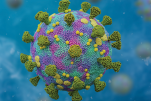This week, the state moved more counties to a less restrictive COVID-19 category and Dr. Mark Ghaly, California Health and Human Services Agency secretary, emphasized the “slow and stringent” approach behind the Blueprint for a Safer Economy unveiled at the end of August.
Dr. Ghaly said the goal is to bring down the transmission rate of COVID-19 to make sure hospitals can handle flu/pneumonia cases in addition to coronavirus cases as California enters the cold and flu season.
In response to questions from reporters at his September 15 briefing, Dr. Ghaly said the state is learning more about COVID-19 antigen tests—which are less costly and provide results more quickly than the molecular (PCR) tests.
Antigen testing for COVID-19 creates an opportunity for the state to allow testing at a broader level using a combination of both the PCR and antigen tests, Dr. Ghaly said.
As of September 17 (with data from September 16), California had 766,201 confirmed cases of COVID-19 and 14,721 deaths. A total of 13,080,037 diagnostic tests had been conducted and the rate of positive tests over the previous 14 days was 3.5%.
Charts and the latest statistics are available at update.covid19.ca.gov.
County Movement
Counties are assigned to color-coded risk tiers—purple, red, orange and yellow—based on the rate of new COVID-19 cases per 100,000 people per day (seven-day average) and the rate of people testing positive for the virus.
The California Department of Public Health website notes that the case rates will be adjusted, starting September 15, based on California median (not average) testing volume.
Dr. Ghaly said the state is working with stakeholders on a “health equity metric” that will take into account the disproportionate impact COVID-19 has had on certain communities, particularly Latinos and Blacks.
As of September 15, 30 of the 58 counties were assigned to the purple/widespread risk tier, a decline from the 33 in that tier as of September 8 and the 38 that were in that most restrictive tier on August 31.
The counties that have moved from the purple to the red/substantial risk tier are Amador, Orange, Placer, Santa Clara, Santa Cruz (as of September 8); and Inyo, Marin, Tehama (as of September 15).
Readers can check on the status of activities allowed in their county and view a color-coded map of the entire state at covid19.ca.gov/safer-economy.
A search box at the top of the webpage enables the visitor to look up the requirements for a specific county. Also available on the page are questions and answers on topics such as why some activities and businesses open while others have to stay closed and whether schools can open.
Ongoing Reminder
The final question and answer reiterate the points with which the Governor and Dr. Ghaly end their COVID-19 briefings.
What can I do to help my county reach a lower tier?
• Wear a mask in public.
• Wash your hands regularly.
• Keep at least 6 feet of physical distance when in public.
• Limit mixing with people you don’t live with.
To see the Blueprint and industry details, visit covid19.ca.gov.


